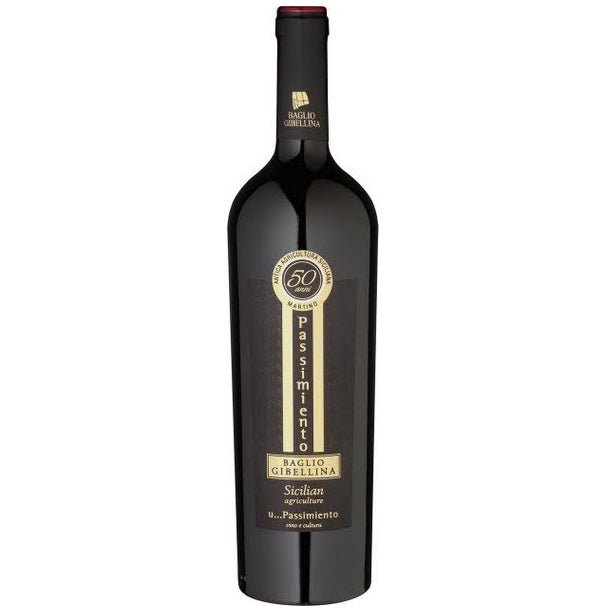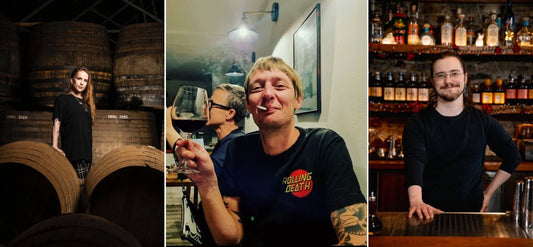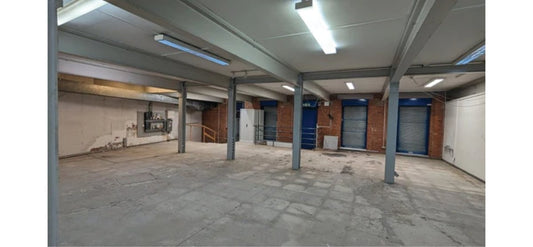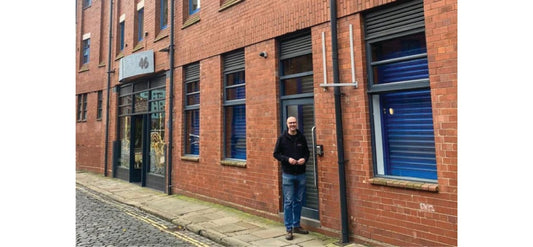The world of wine and why we love it.
The world of wine is genuinely fantastic. Wine itself is delicious, the vineyards and the vistas are picturesque, and the history is fascinating. It is easy to get lost in the world of wine, the beautiful vineyards, the smell and taste in your glass, I could go on. There is more to this world than just the liquid and the physical aspects, once you are a part of the wine trade it is hard to leave. This is solely down to the people and the community. We are fortunate that we work with so many lovely people, from the importers to the producers themselves.

One such lovely group of people are from our specialist Portuguese importers, Marta Vine. Owned and operated by Marta and Kevin Bowers, who are two of my absolute favourite people we work with.
When I started with Latitude Wine in the distant past, Chris had one singular Portuguese wine that wasn’t a port, Quinta Da Garrida from Dao. Ports numbered perhaps five products. Since Marta Vine came along, our collection has ballooned. In the two years following our introduction to Marta, it was our biggest growing category in both sales and purchases. Now, at the time of writing our shelves are stocked with fifty-six different Portuguese offerings with more to arrive soon.
Now that the nice things have been said, it is time for self-indulgent bragging. The lovely Marta organised a trip to visit Porto and the vineyards of the Douro river in partnership with Real Companhia Velha. This is one of the most respected and well-known port houses within Portugal itself, though relatively unknown within the UK. Unfortunately, Kevin couldn’t come but I guess that’s what happens when you have a successful business, sorry Kevin!
Real Companhia Velha, a short history.

So, who are Real Companhia Velha? Well, for a start they are the oldest wine company in Portugal, dating back to 1756. That is 268 years of history. This company is older than the USA, a fact which I’m sure our American cousins would find baffling.
The company was set up by a humble group of people including King D. José I, the Portuguese Prime Minister Sebastião José de Carvalho e Melo, aka the Marquis of Pombal. Ok, maybe not very humble origins but the company was set up for a noble cause, the aim was to “break the monopoly of the English Trading Post, to balance supply & demand, to ensure the quality & authenticity of the product & to protect it from disloyal competition by wines from other parts of the kingdom”. Well, now you know.
In 1970, Real Companhia Velha became an independent company under the ownership of the Silva Reis family. Pedro Silva Reis is the current family patriarch and runs the operation with his two sons, Pedro Junior, who’s focus is on the still wine side of the business, and Tiago who is focusing on growing the business and blending the ports. He is set to take over as the master port blender for the company in due course once his father fully retires. Tiago, who I have met several times at trade tastings in the UK, acted as our personal guide. Always good humoured and infinitely patient with our rabble.
Land on fire.
If you haven’t been to Porto, why not? The city is picturesque with a beautiful setting on the Douro and featuring amazing architecture. Book a trip, eat some cod, drink some wine, watch the sunset over the Mosteiro da Serra do Pilar. Perfect.


When we arrived in this beautiful city however, we were greeted by something I had not expected at this time of year. Wood smoke, and a lot of it. Wildfires were burning and the city was wreathed in sweet smoke. The threat of wildfire was evident for the whole trip, from Porto all the way inland to the village of Pinhão. In Porto itself, the ever-present smoke felt almost like a novelty, providing a natural sepia style filter to pictures of the river and the city. Once out into the countryside, the danger was obvious. Closed roads, even motorways, hills billowing plumes like volcanoes into the sky and sometimes almost impenetrable clouds of choking smoke, at points I even found myself having to brush ash off my shoulders. At night the hills and sky were tinged with a red glow, an eerily beautiful reminder of the ever present danger the local people have to live with.



Real Companhia Velha, The Port Wines.
Whenever I visit a producer, wine or spirits, I must visit the cellars or warehouses. These are magical places, atmospheric, timeless cathedrals to the art of maturation and the coopers craft. Hands down, Real Companhia Velha have the most incredible aging warehouses I have ever seen. Gargantuan man-made caverns filled to the brim with more cask types and sizes than I knew existed. Port pipes ranging from 550L capacity up to 650L, towering vats with capacities upward of 30,000 litres and rare oddities such as oval shaped casks imported from Germany simply because they looked interesting.



The style of ports produced here are very different to what you find in the better-known port houses available in the UK. The wines are of course rich and powerful, but they are also elegant and make the more readily available ports feel sickly sweet. The Vintage ports are, as you would expect outstanding, only produced in the best years and with great longevity. The rubies and LBVs are exactly what you want from the category but for me, it is the Tawny ports that are the ones to seek out from this house.
I have always preferred a tawny. At this house I found my occasions for when to drink this style expanded. No longer will this drink be the domain of a cold winter’s night, now I will be having this style all year round thanks to the revelation of chilled tawny. Try it! The age statement releases are great benchmark examples of the category, but my interest lies with the Colheita’s. Not only are these vintage releases of a Tawny, but they are in fact single barrel examples from this house. Unfiltered, less polished and a little more rough and ready, most importantly they are exciting!
We stock some relatively, modestly priced examples in the shop but Tiago was kind enough, (I don’t think he was drunk enough?), to let us play a game; “How old is the port”. We were given a 40yo tawny to judge the mystery pour against. The wine was incredibly complex and showed age but was fresh with a lovely vibrant acidity I haven’t ever come across in a port. I thought I was being clever and guessed at a 1984 Colheita release, 40-year single vintage to compare with a 40 year old age statement? I must have been right. I was wrong, we all were. The closest guess was exactly 100 years out. What Tiago had poured us was in fact an 1867 vintage Colheita!

Wow. What was happening in 1867 I was thinking. I had to know, I got out my phone and had to google this, rudeness be damned. This was the year that the USA handed over a cheque to the Russian Empire for the purchase of Alaska, paying around 2 cents per acre. The British North America Act officially proclaimed Canadian Confederation. This year saw the last Shogun in Japan. This was also the year the last ever penal ship left the UK, bound for Western Australia where my maternal grandmother and her family were from. This was pure history, and I was drinking it! This was an honour that I will never forget. We also finished the bottle…If you would like to try this liquid history, you can for the earthly sum of €2750 per bottle and a bargain at that.
Quinta Das Carvalhas & Quinta de Cidro.

Quinta Das Carvalhas, (pronounced ca-VAI-ash, at least it sounded like that), is the premium single estate owned by Real Companhia Velha. Located on the South bank of the Douro opposite the famous village of Pinhão, the estate is essentially an entire hill with the old winery buildings and olive presses at the base which now house the shop. The hilltop itself is crowned with the impressive Miradouro Quinta das Carvalhas. If you have a few bob lying around, you can book this hilltop hotel and have arguably the best panoramic view of the Douro Unesco World Heritage site! We ate many fantastic meals on the trip, but the rustic, homely meals cooked by the ladies at Carvalhas were showstoppers, the octopus and rice was amazing, (I had three servings), but the cod pie is a dish I will dream about for a long time.
The vines are split into many parcels terraced up all sides of the hill. The grapes grown on the North side receive a full hour and half less sunshine than the vines grown on the South facing slopes. Because of this difference, North facing grapes looking at the Douro river are destined for dry table wines, South facing vines cascading down towards the Rio Central tributary river, with their better aspect to the sun are bound for the fortified ports.

Turning a full 360˚ viewing the surrounding valleys from the top of the hill, many familiar names jump out, emblazoned on signs and the sides of buildings. Amongst them, Dow’s, Warres, Crofts, Fonseca, Graham’s. Here is a place you cannot escape the culture of the vine.


What are the table wines like? By this point I am sure you can guess what my analysis will be. They are lovely! Pedro Jr. is putting together some fantastic wines. Sourced from a separate estate called Quinta De Cidro, Pedro is producing some fun wines in a style completely apart from the more standard Douro fare. The Dandy de Cidro range are all about freshness, lightness & affordability. Pedro has travelled widely in the wine world and wants to put his own stamp on the wines he produces. The white drinks like a petit Chablis, the red is more along the lines of a Beaujolais. These are designed for the sheer enjoyment of a glass of wine, no occasion or food needed.
The Séries Concept range of wines is wine nerd central! Portuguese wines are generally blends of grapes. Even in Portugal most people including those in the wine industry are fairly ignorant of the native grapes grown in the country. This was the local assessment not my own. Séries is a range that gives us and locals, the opportunity to try these grapes by themselves. Depending on the varietal, a touch of oak may be used to soften the tannins, but the idea is to show off the fruit purity. Grapes are picked from the various estates the company owns depending on the varietal. My favourite of these was the colourfully titled Bastardo, unlike its name would suggest, the wine is elegant. Light fresh and juicy, very easy drinking but never dull, moreish for want of a better word. Then you realise it is 14% alcohol instead of the 12.5% that it takes like, that must be why it has acquired its name.

The more classic Douro wines we tried, also from Quinta De Cidro included an absolutely stonking Touriga Nacional, Portugal’s flagship varietal, though even this range included some oddities such as Pinot Noir. The Douro is pretty warm, so how do they make a successful Pinot Noir? Altitude is the key. The temperature difference from the river level to the tops of this hills is dramatic, add to that the constant breeze and you get delicious, perfectly ripened grapes!

Rounding things off.
Porto is an excellent destination, and the Douro truly lives up to its status as a Unesco World heritage site. It is simply stunning visually, it does not matter which way you turn, your eyes are in for a treat. I am a huge fan of the unique wines from this region. What really makes this region however, is the people. They are infinitely friendly, the hospitality is warm and generous. The place is easy to get to, but what is even easier is to simply come down to the shop and buy some Douro wine, fortified or not. Please come in for a chat or any advice on this wonderful region and its wines.








1 comment
This was such a good read, thanks. And I am very jealous of the 1867 port!